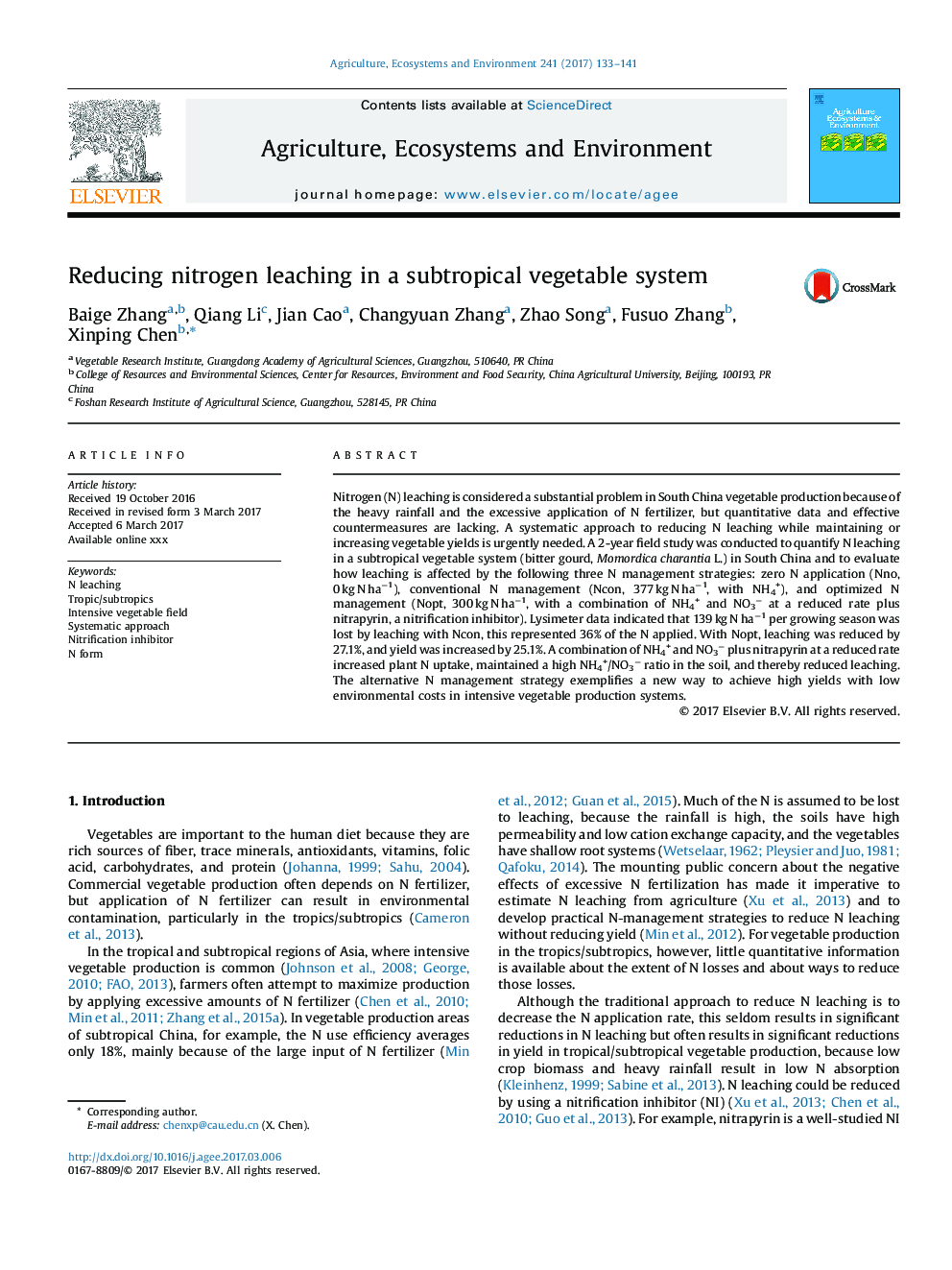| Article ID | Journal | Published Year | Pages | File Type |
|---|---|---|---|---|
| 5538264 | Agriculture, Ecosystems & Environment | 2017 | 9 Pages |
Abstract
Nitrogen (N) leaching is considered a substantial problem in South China vegetable production because of the heavy rainfall and the excessive application of N fertilizer, but quantitative data and effective countermeasures are lacking. A systematic approach to reducing N leaching while maintaining or increasing vegetable yields is urgently needed. A 2-year field study was conducted to quantify N leaching in a subtropical vegetable system (bitter gourd, Momordica charantia L.) in South China and to evaluate how leaching is affected by the following three N management strategies: zero N application (Nno, 0 kg N haâ1), conventional N management (Ncon, 377 kg N haâ1, with NH4+), and optimized N management (Nopt, 300 kg N haâ1, with a combination of NH4+ and NO3â at a reduced rate plus nitrapyrin, a nitrification inhibitor). Lysimeter data indicated that 139 kg N haâ1 per growing season was lost by leaching with Ncon, this represented 36% of the N applied. With Nopt, leaching was reduced by 27.1%, and yield was increased by 25.1%. A combination of NH4+ and NO3â plus nitrapyrin at a reduced rate increased plant N uptake, maintained a high NH4+/NO3â ratio in the soil, and thereby reduced leaching. The alternative N management strategy exemplifies a new way to achieve high yields with low environmental costs in intensive vegetable production systems.
Related Topics
Life Sciences
Agricultural and Biological Sciences
Agronomy and Crop Science
Authors
Baige Zhang, Qiang Li, Jian Cao, Changyuan Zhang, Zhao Song, Fusuo Zhang, Xinping Chen,
